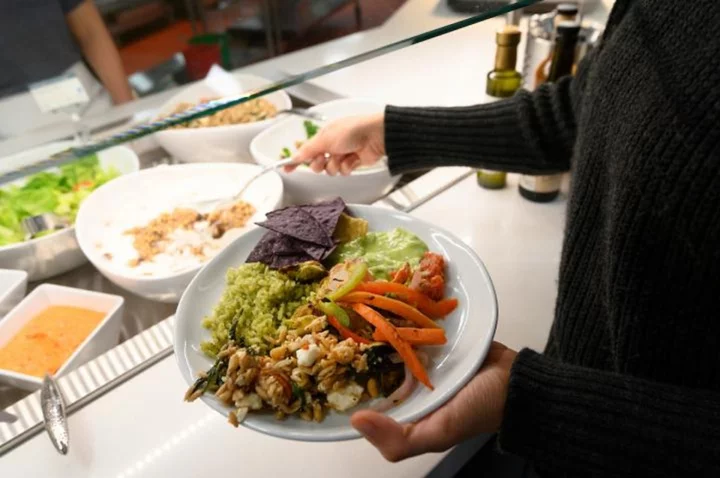
Being vegetarian may partly be in one’s genes, study finds
A person’s genetic makeup can play a role in determining whether they can stick to a strict vegetarian diet or not, according to a new study. The research, published on Wednesday in the journal PLOS One, may lead to further studies on personalised dietary recommendations and the production of meat substitutes. While a large fraction of people self-identify as mainly “vegetarians”, they also report eating fish, poultry and/or red meat, suggesting there may be environmental or biological constraints that override one’s desire to adhere to a vegetarian diet, said scientists, including those from Northwestern University in the US. “It seems there are more people who would like to be vegetarian than actually are, and we think it’s because there is something hard-wired here that people may be missing,” study co-author Nabeel Yaseen said. In the study, researchers compared UK Biobank genetic data from 5,324 strict vegetarians – consuming no fish, poultry or red meat – to 329,455 controls. Scientists found three genes linked with vegetarianism and another 31 genes that are potentially associated. Several of these genes, according to the study, are involved in lipid (fat) metabolism and/or brain function including two of the top three (NPC1 and RMC1). “My speculation is there may be lipid component(s) present in meat that some people need. And maybe people whose genetics favor vegetarianism are able to synthesize these components endogenously,” Dr Yaseen said. “However, at this time, this is mere speculation and much more work needs to be done to understand the physiology of vegetarianism,” he said. While vegetarianism is increasing in popularity, vegetarians remain a small minority of people worldwide, with 2.3 per cent of adults and 1.9 per cent of children in the UK identifying as vegetarian. Scientists believe the driving factor for food and drink preference is not just taste, but also how an individual’s body metabolises it. Citing an example, they said when trying alcohol for the first time, most people would not find it pleasurable for the first time, but develop a taste because of how alcohol is over time. “I think with meat, there’s something similar. Perhaps you have a certain component – I’m speculating a lipid component – that makes you need it and crave it,” Dr Yaseen said. “While religious and moral considerations certainly play a major role in the motivation to adopt a vegetarian diet, our data suggest that the ability to adhere to such a diet is constrained by genetics,” he said. Scientists hope future studies will lead to a better understanding of the physiologic differences between vegetarians and meat eaters. They said such an understanding would enable personalised dietary recommendations and to produce better meat substitutes. Read More Six healthy recipes that both you and your gut will love Father sparks debate for giving his son non-vegan food behind his wife’s back From leaf crisps to pudding, India’s ‘super food’ millet finds its way onto the G20 dinner menu
2023-10-05 12:19
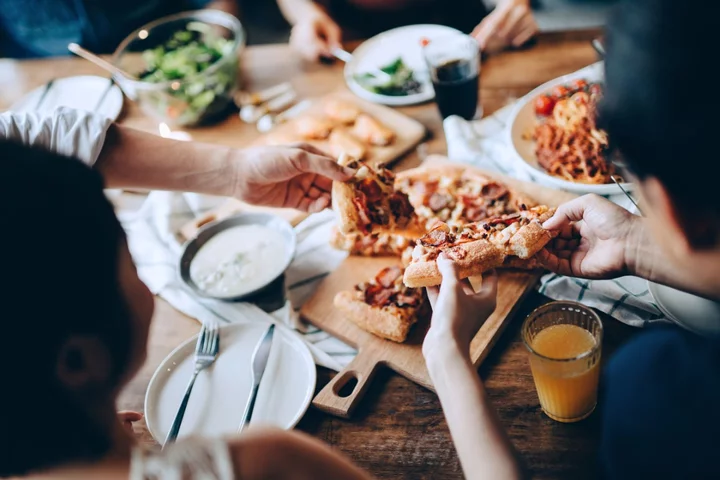
Brits will eat over 5,000 slices of pizza in their adult life, study finds
The typical Brit will munch through 5,208 slices of pizza over the course of their adult life – but 83 per cent have no regrets about the amount they eat. A poll of 2,000 adults found 12 per cent eat up to three pizzas each week – with between 6pm and 8pm being the most popular time to chow down. This equates to an average of £21.40 a month on the beloved Italian classic – or £256.80 a year. In fact, 40 per cent are picking pizza over other meals and snacks with 18 per cent saying they’re likely to reach for a slice over other takeaway treats like kebabs (three per cent) or an Indian takeaway (15 per cent), because it makes them happy (42 per cent). With 57 per cent citing it as their ‘comfort food’. The research, commissioned by Tabasco Brand to celebrate National Pizza Month, also found Friday (24 per cent) and Saturday (21 per cent) are the preferred days to tuck into the dish. A spokesperson for the hot sauce maker said: “Pizza is an easy way to bring people together as the ultimate dish to share with friends and family. “Great for any occasion, the cheesy goodness with an added dash of hot sauce is a great way to light up any movie night or end of week celebration.’ Ordering it to your home (46 per cent) is the preferred location to eat pizza, as opposed to at a restaurant (18 per cent). The study, carried out via OnePoll, also found the nation’s top ‘pizza moments’ are a movie night at home (36 per cent) and after a night on the town (29 per cent). Pizza-lovers are also growing more adventurous, with 48 per cent experimenting with different flavours and toppings, citing combinations like hot sauce and mayo (17 per cent), hot sauce and honey (15 per cent) and hot sauce and queso (13 per cent) as the blends they’re most likely to explore. And when it comes to toppings, mushrooms (37 per cent), mozzarella (37 per cent) and onions (33 per cent) come in the top three – with pepperoni (31 per cent per cent) and garlic (26 per cent) just behind. The spokesperson for Tabasco Brand, which has teamed up with Yard Sale Pizza to allow Londoners to share custom messages to friends and family via its Yard Sale x Tabasco Pizza Post, added: “It’s great to see that people are open to experimenting with some seriously hot combinations. “Pizza is a great medium for this. Its cheesy base counteracts the heat from the hot sauce, allowing people to try out flavours that seem spicier than they’re used to. “Plus, the acidity of the vinegar cuts through the rich toppings, deepening the flavour and taste of the pizza. Together, the combination can light up even the simplest of pizzas.” The best time to enjoy a pizza: 1. A movie night at home 2. On a Friday night after a long week at work 3. When watching sports on TV 4. As a payday treat 5. Getting in after a night out 6. The day you get back from a holiday 7. The day you move house and don’t want to cook 8. As a celebration – like on exam results day 9. Your birthday 10. Leftovers as a treat lunch at work Read More Brits admit they’re ‘clueless’ about art including paintings by Pablo Picasso Brits get itchy feet in their home after five years, study finds The exact time Brits find themselves ‘uncontrollably hungry’ revealed Is there such a thing as British pizza? Jamie Oliver says he’d choose anonymity over fame if given the choice again
2023-10-03 20:15

‘Anonymity is our greatest gift’: Jamie Oliver says he’d choose ‘a normal life’ over fame if given the choice again
Jamie Oliver has claimed he would choose a life of anonymity over fame, if he was given the chance to go back and do things again. The TV chef was interviewed by broadcaster Kirsty Young for her debut podcast, Young Again, which is available on BBC Radio 4 and BBC Sounds. In each episode, Young revisits pivotal moments in the lives of her guests, and asks them what they wish they’d known at the time – along with what they would change if given the opportunity. In the third episode of the podcast, which is out now, Young spoke with Oliver about his rapid ascent to fame aged just 23, following the release of his BBC cooking show The Naked Chef. Oliver, now 45, also discussed what he learnt from a young age working in his parents’ pub, his relationship with wife Jools, and the challenge of balancing his activism and campaigning work with running a business empire. “If you could go back, would you not do it?” Young asks him during the episode. “Definitely,” Oliver responds. “I’m not trying to say ‘shoulda woulda coulda’ but if I came back on Earth and did again, I would go to (set up the) pub, and I would have a normal life and I would be aware that anonymity is our greatest gift that we will never give any currency to. “And to have just enough and to trot on, and to be the best you can at your thing, and be part of a community, and to have a mutuality… That is very very very precious.” Oliver and his wife met when they were 17, and have been together ever since. They have children together. The TV chef’s remarks come not long after his business enjoyed a major boost thanks in part to his work producing shows such as Jamie’s £1 Wonders. The programme achieved an average of 1.4 million viewers as it helped households deal with the cost-of-living crisis by creating cheap and nutritious meals. His empire, which includes TV shows, recipe books, branded products and several lucrative partnerships, along with his numerous franchised restaurants around the world, made a pre-tax profit of £7.7m in 2022, a 17.5 per cent increase on the past year. Sales for the Jamie Oliver Cookery School, which offers cooking classes in London and online, also grew by more than a third last year. Amid a return to the hospitality industry after lockdowns during the pandemic, he also announced the launch of a new restaurant in London’s Catherine Street, scheduled to open in November. Last month, Oliver called for more free school meals help from the government, urging them to “put children’s health first” and widen the eligibility. Under current rules, only children from households with an income below £7,400 – after tax and benefits – are eligible. Following a major campaign by The Independent,London mayor Sadiq Khan has pledged to roll out free primary school meals to all pupils in the capital in a year-long pilot. The first three episodes of Young Again, the new podcast from Kirsty Young, are available now on BBC Sounds. Future episodes will be broadcast weekly on BBC Radio 4 at 11am from 3 October. Read More Jamie Oliver’s businesses notch up higher profits after £1 Wonders TV success Jamie Oliver calls for vulnerable children to be given free school meals Tom Kerridge: Free school meals should be part and parcel of education Is there such a thing as British pizza? Three recipes from Michel Roux’s new fuss-free French cookbook How to cook to keep your gut healthy
2023-10-03 18:46
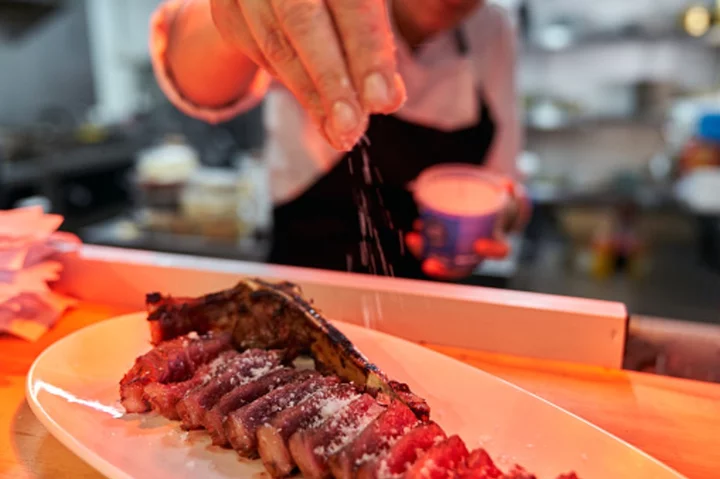
Friends who created fake New York City steakhouse with year-long waitlist open for one night only
People looking to eat at a high-end restaurant in New York City ultimately learned that the entire thing was an elaborate prank. On Saturday 23 September, Mehran’s Steakhouse finally had a table available in its East Village location after previously having a waitlist with nearly 3,000 names on it. Around 140 diners showed up with no idea that the restaurant wasn’t real. The origins of the prank date back to 2021, when Mehran Jalali and his 16 housemates were having biweekly steak dinners that he would cook in their Upper East Side apartment. As a joke, the roommates made a Google page where they could leave good reviews. Strangers eventually found them and assumed the reviews were real. After more people got accidentally wrapped up in the prank, the roommates created a website for the steakhouse, and by 2022, the wait list had 2,600 names on it. The group then attempted to make their prank real this past weekend, when they rented an event space in the East Village, and obtained a one-day liquor license and food-handling permits before inviting those who’d put their names on the reservation list. Members of the press were able to attend the restaurant, including a New York Times food writer, as well as a reporter from the New York Post. The $144 main entree was called the Bovine Circle of Life, better known as steak and potatoes. The restaurant’s simple salad also came with an elaborate name, Agrarian Synergies. A waiter even walked around with a gallon of milk, claiming it was from a cow from Uganda named Phillip as part of the meal’s concept. Part of the prank also included a selection of framed photographs of Jalali posing with celebrities he had “cooked for” over his years as a chef, including Albert Einstein, Marilyn Monroe, Barack Obama and John F Kennedy. “The worst-case scenario for me would’ve been if like, people realise that it was a fake steakhouse not because like, like the pranks and stuff, you know, that the lies were absurd, but because just like the food wasn’t that good, which ended up not happening,” the 21-year-old told Inside Edition. The group also staged a celebrity appearance. “We had some of our friends come and hold posters for Drake so that way people walking by, people walking would think that Drake was actually inside when he really wasn’t,” one of the pranksters, Riley Walz, told the outlet. According to the Daily Mail, the creators said they hoped the night wouldn’t be a “one hit wonder”. “People said they wouldn’t change a single thing about the steak,” the chef added. Since the one-night opening, more people have taken to Google to leave the steakhouse a review. “I got the luxury of being able to attend the one night only pop up and it did not disappoint!” one review began. “The waiter was very attentive and he didn’t bat an eye even when my husband asked him to recook the steak five times! Always smiling. We received complimentary wine because of this event. It was delicious.” The review continued: “The chef told me he personally crushed the grapes with his feet and fermented the juice for 98 years. Wine was amazing but the showstopper was the steak. The aroma in the restaurant alone almost made me pass out. I was getting lightheaded as I did not eat for four days just so that I would be able to eat as much as possible today. The first bite was better than anything on Earth. I levitated ... Turns out Drake was there a bit earlier than me?! He has great taste haha.” The Independent has contacted Jalali for comment. Read More Starbucks faces lawsuit as customers claim refreshers contain no fruit Subway enthusiasts stew over launch of first ever 3-inch sandwich 8 of the best wine regions to travel to around the world Cold-weather recipes to get on your radar now Five easy recipes to cook with your kids Baked beans and pasta become kitchen cupboard staples in British households
2023-09-28 00:53
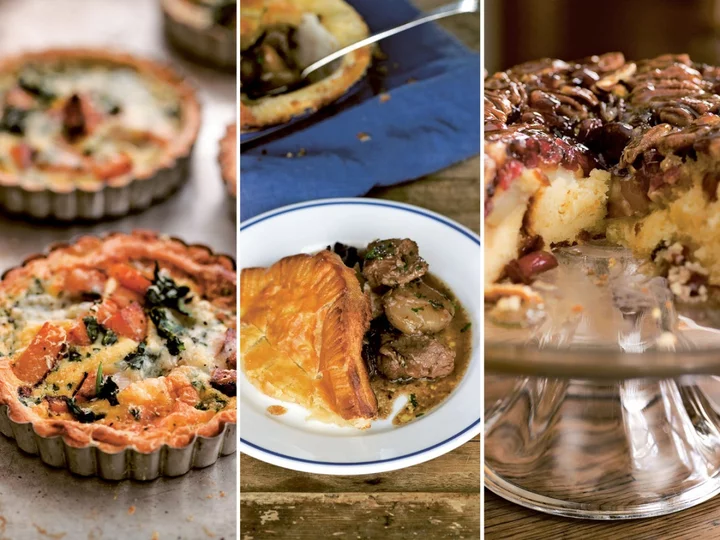
Cold-weather recipes to get on your radar now
Pumpkins and squash are great in tarts, and it’s the mixture of sweet and salty in savoury pumpkin tarts that really gets me,” says food writer Diana Henry. Pumpkin tarts with spinach and gorgonzola Serves: 6 Ingredients: For the pastry: 225g plain flour, plus more to dust 175g butter, chilled and chopped Sea salt flakes For the filling: 450g pumpkin or squash Olive oil 450g spinach, coarse stalks removed 2 large eggs, plus 1 egg yolk 275ml double cream 50g parmesan cheese, finely grated Freshly grated nutmeg 200g gorgonzola cheese Freshly ground black pepper Method: 1. For the pastry, put the flour, butter and a good pinch of salt into a food processor and pulse-blend the mixture until it resembles breadcrumbs. Add just enough very cold water to make the pastry come together. Wrap it in foil or clingfilm and refrigerate for about half an hour. 2. Preheat the oven to 180C fan (375F), Gas 5. 3. Cut the pumpkin or squash from top to bottom into broad slices, remove the inner stringy bits and seeds, then peel. Brush lightly with olive oil and bake for 30-35 minutes, or until just tender. Turn off the oven. Put the spinach into a large saucepan, cover and wilt in the water left clinging to it (about four minutes over a medium heat). Drain well and leave to cool. 4. Make the custard by mixing together the eggs, egg yolk, cream and parmesan. Season well. Roll out the rested pastry on a lightly floured surface and use it to line six individual tart tins. Chill for another 30 minutes (or just stick them in the freezer for about 15 minutes). 5. Preheat the oven again to 180C fan, Gas 5. Prick the bottom of the tarts with a fork, line them with baking parchment and put baking beans or ordinary dried beans on top. Blind bake for 10 minutes. Remove the paper and beans and cook the pastry cases for another five minutes. 6. Cut the pumpkin into small slices, about 10 centimetres long and one centimetre thick. Squeeze every last bit of water from the spinach and chop it up. Season both of these and add some freshly grated nutmeg to the spinach. Spread the spinach over the bottom of the tart cases, then add the slices of pumpkin and dot with nuggets of gorgonzola. 7. Pour the custard mix over the tarts and bake for 25-30 minutes, or until the pastry is golden and the custard feels only just set when you put your forefinger in the centre of a tart. Leave for 10 minutes to let the custard finish cooking and set a little once you have taken it out of the oven. Beef pie with wild mushrooms and red wine With wild mushrooms and red wine, this beef pie is perfect as the days get shorter and colder. Serves: 6 Ingredients: 1kg braising beef, cut into large chunks 30g dried wild mushrooms Groundnut oil 350g baby onions, or small round shallots, peeled but left whole 50g butter 1 celery stick, finely chopped 2 garlic cloves, crushed 30g plain flour 300ml red wine Leaves from 3 thyme sprigs 3 bay leaves 300g fresh mushrooms, sliced 3 tbsp finely chopped flat leaf parsley leaves 320g puff pastry for 1 big pie, 600g for 6 small pies 1 egg, lightly beaten Sea salt flakes and freshly ground black pepper Method: 1. Dry the meat well with kitchen paper (if it’s wet it won’t brown properly). Put the dried mushrooms in a heatproof bowl and pour enough boiling water over to just cover. Leave to soak for 30 minutes. 2. Heat two tablespoons of oil in a heavy-based casserole and brown the beef in batches: it is very important to cook it in batches otherwise the meat will not colour well. Remove each batch as it’s done. Add the baby onions or shallots to the pan and lightly brown them, adding a little more oil if you need it. Reduce the heat, add 20 grams of the butter and all the celery and garlic, and sweat for 10 minutes. Return the meat, with any juices, to the casserole. Season well and, over a low heat, add the flour. Stir everything round until it is well coated. Cut up the mushrooms and add to the pot with their soaking liquid (strain the liquid through muslin, as it can be gritty). Add the red wine, thyme and bay leaves and bring to the boil. Immediately reduce the heat, cover and cook over a very gentle heat for one-and-a-half hours, stirring every so often. Take the lid off for the last 15-20 minutes to reduce the liquid. You need thick juices for a pie, so, if they’re too thin, remove the meat and mushrooms and boil to reduce the sauce. 3. Melt half a tablespoon of oil and the remaining butter in a saute pan and cook the fresh mushrooms briskly over a high heat so that they get well coloured. Season and let the mushrooms cook until they exude their liquid and it evaporates. Stir the parsley and the cooked fresh mushrooms into the meat and check the seasoning. Leave to cool completely. 4. Put the meat in one large or six small pie dishes and roll out the pastry to fit the dish(es). Cut a strip or strips large enough to go around the edge or edges. Brush the edge(s) with water and press the strip on. Dampen this with water and cover the pie or pies with their lids, pressing the pastry down. Trim off the excess, knock up the edges and crimp them, if you like, or just press with a fork. Use the remaining pastry to decorate, making little holes in the top for steam to escape. Brush with the beaten egg and chill for half an hour. Preheat the oven to 190C fan, Gas 6. 5. Bake in the oven for 40-45 minutes for one large pie, or 25-30 minutes for smaller pies. Serve immediately. Pecan and pear upside-down cake “The cranberries look beautifully jewel-like on this cake, which can be eaten warm as a pudding as well as with tea or coffee,” says Henry. “The fruit combination also works well in a Tarte Tatin. The ginger here is optional, but it mutes the sweetness a little.” Serves: 10 Ingredients: For the fruit and nuts: 75g unsalted butter 115g caster sugar 350g firm pears (about 2) 140g cranberries 75g pecans For the cake: 120g unsalted butter, softened 200g caster sugar 2 large eggs, separated Drop of vanilla extract 210g self-raising flour 1 tsp baking powder 1 tsp ground ginger (optional) 175ml full-fat milk Method: 1. Preheat the oven to 180C fan (375F), Gas 5. 2. Melt the butter and sugar for the fruit and nuts in a heavy-based ovenproof saute pan, 25cms in diameter, over a low heat. Peel and core the pears and cut them into slices, about 1cm thick, then place them on top of the butter and sugar. Cook these over a gentle heat until just tender, then whack the heat up and cook them until lightly caramelised. Scatter the cranberries and pecans on top and gently mix all the fruit around. Turn the heat off, but don’t let the pan get cold. 3. For the cake, cream the butter and sugar and add the egg yolks and vanilla. Mix in half the flour along with all the baking powder and ginger, if using. Add the milk and then the other half of the flour. Mix until smooth. 4. Whisk the egg whites until they form medium peaks. Add one tablespoon of the beaten whites to the batter to loosen it, then, working quickly, fold in the rest with a large spoon. 5. Spread the batter over the fruit and nuts in the pan and bake in the preheated oven for 35-40 minutes, or until a skewer inserted into the sponge comes out clean. 6. Leave the cake to cool for 10 minutes before turning it out, but no longer, or the caramelised fruit will stick to the pan. If this does happen, carefully lever the pears off the pan and lay them on to the cake with their dark, caramelised sides facing upwards. ‘Roast Figs, Sugar Snow’ by Diana Henry (Aster, £22). Read More Is there such a thing as British pizza? Five easy recipes to cook with your kids The dish that defines me: Rosie Grant’s grave recipes Courgette season is nearly over – here’s three ways to make the most of them How to cook to keep your gut healthy Leave Rick Stein alone – it’s totally reasonable to charge £2 for mayo and ketchup
2023-09-27 13:57

The dish that defines me: Rosie Grant’s gravestone recipes
Defining Dishes is an IndyEats column that explores the significance of food at key moments in our lives. From recipes that have been passed down for generations, to flavours that hold a special place in our hearts, food shapes every part of our lives in ways we might not have ever imagined. I run a TikTok called @ghostlyarchive, where I share recipes from gravestones mainly across the US that I make and eat. It all started in 2021, while the Covid pandemic was still ongoing. I was studying to be a librarian. One of my classes was about social media and we were tasked with creating a fresh social media account and had to pick a niche. At the same time, for the same library programme, I had to choose a library or an archive to intern with. I found a fairly virtual internship that let me do things safely outside and in person – which was at a cemetery. I ended up interning in a cemetery archives at a congressional cemetery in Washington DC, and this ended up being my social media niche, too. I chose TikTok, which I was new to at the time, and the class required me to post something about my niche every day for three months. So I learnt that there was a whole section of TikTok called “GraveTok”, where there were gravestone cleaners, preservationists and historians posting content, as well as people who just really loved cemeteries and the storytelling around them. I was posting everyday, and when you post everyday, eventually you’re just sharing anything that you come across that’s vaguely interesting. So at first, it was just about the internship, then I moved on to featuring other gravestones in DC. I started sharing any interesting grave or memorial that I was learning about, and that’s how I heard about Naomi Odessa Miller-Dawson’s grave recipe. Naomi has a really beautiful gravestone in Brooklyn, New York. It’s shaped like an open cookbook and features ingredients for her signature spritz cookies, a type of butter cookie that is made using a cookie press. I remember seeing a photo of Naomi’s gravestone and wondering what they tasted like. Because it was during pandemic times, when we had a lot more free time, I had been learning how to cook more and became really curious about this recipe. So I made them, shared the process on TikTok, and it exploded overnight. People were really intrigued by the grave recipe. In the comments, they were asking questions like: “I didn’t know this, who makes these? Are there other gravestones like this?” Or sharing their own experiences saying: “My mum has a really good recipe” or “This is how I make my cookies”. After that, I learned more about who Naomi was and while I was doing that, I was learning about other gravestones with recipes on them that were featured in local blog posts or posted to Twitter, or even on local news. That’s where the project originated. I’ve now made 23 grave recipes, but that first one was such a journey and I’ll remember it forever. The very first time I made the spritz cookies, I baked them incorrectly because there were no instructions on the gravestone and I didn’t know what a spritz cookie was. I made them in little circles and later learned from people commenting on the video that I was supposed to use a cookie press, so I bought one and made them again. They are really beautiful, delicate little butter cookies that you can decorate. I initially thought they were a sort of sugar cookie, because that’s what the ingredient list sounded like to me, but when I figured out what they were and the proper way to make them, it was such a revelation. Eventually, I met Naomi’s family and made her recipe with them. It was so interesting to learn about her family. I felt very honoured that they welcomed me and took the time to talk about who this woman was and what she meant to them. Naomi was the matriarch of her family and an excellent cook. No one was allowed to bring takeaway food into her home because she would say: “I can cook better than anything you can get at a restaurant.” Her son talked about sitting at the counter in her kitchen, just waiting for the cookies to come out of the oven so he could have a freshly baked one immediately, and he did the same thing when we were cooking together. I often think about how the recipes that get put on these graves are such a big part of family food traditions, which is very cool to me. When I met Naomi’s son and granddaughter, who now live in Pennsylvania, we drove past her old house and visited her grave in the cemetery and heard stories about her. I felt close to Naomi, even though I’d never met her. There’s something about food that connects you to so many memories and people of the past. For example, I’ve never met my great-grandparents, but my mother still cooks her grandmother’s recipes and she still talks about this person when she cooks them. It’s a really interesting connection to the tastes, smells and sights that my great-grandmother, who was an Irish immigrant, had. Weirdly, she is actually buried in the same cemetery as Naomi! There is something about food that makes us feel more present with our deceased loved ones. I don’t know what it is, but food has this amazing quality to do that. Other grave recipes that I’ve tried and continue to make include a fudge recipe from Utah and a snickerdoodle recipe from California. I’ve also made two grave recipes from Israel, which were both written in Hebrew. One of them just had the ingredients on it and his widow told the press that if you know how to cook, you’ll know what to do with them. Well, apparently I don’t know how to cook because I had no idea! Luckily, I work part time at the American Jewish University and their librarians both read and speak Hebrew, so they helped me translate the grave. They decided it was a type of mildly sweet yeasted bread and I’ve made it a few times now, it’s really delicious. My friends have asked for that one very frequently because it’s really an objectively good bread. Most of the recipes that end up on graves tend to be baked goods, or sweet recipes, there are a lot of cookies, cakes, pies, cobbler, ice cream. There are a few savoury ones, like a meatloaf, two cheese dips, and a chicken soup. But the rest of them are pretty much desserts. I think they are chosen according to what is comforting for those who are still around. They think: “My grandma made this thing and I immediately associate that thing with her, or my mum or dad, or whoever”. They have a signature dish and get excited when they think about it, and I think that’s how they choose what to put on the grave. Rosie Grant is an archivist currently living in Los Angeles. She visits cemeteries with grave recipes whenever she travels, and shares her process for making these recipes on her TikTok, @ghostlyarchives. Read More The dish that defines me: Michele Pascarella’s Neapolitan ragu The dish that defines me: Evelin Eros’s rum cake The dish that defines me: Mallini Kannan’s baked honey-soy salmon Is there such a thing as British pizza? Courgette season is nearly over – here’s three ways to make the most of them How to cook to keep your gut healthy
2023-09-25 13:56
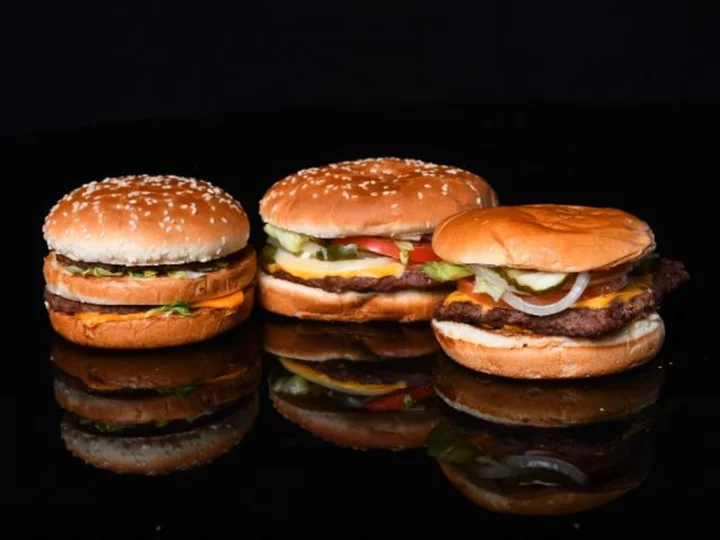
Burgers and tacos don't look like they do in ads. Lawsuits are trying to change that
When it comes to food advertising, what you see is rarely what you get. A flurry of recent lawsuits wants to change that.
2023-09-23 15:28
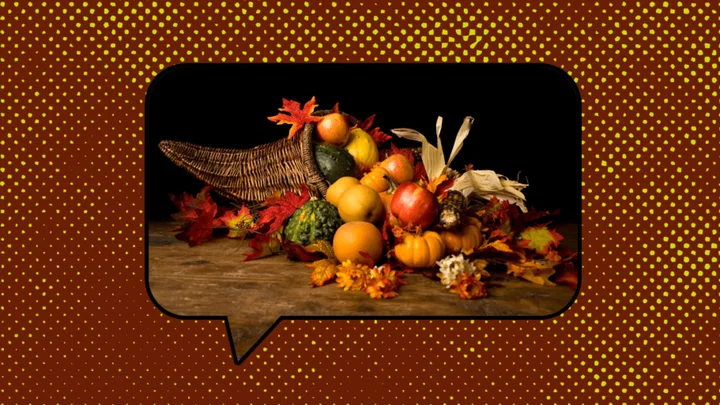
20 Fall Harvest Words and Their Origins
Fall is here, and you're getting hungry. Feast on this cornucopia of etymologies for seasonal veggies straight from the garden.
2023-09-23 01:29

When Pepsi Tried Giving Away $1 Billion With the Help of a Chimp
The soft drink company teased consumers with a giant contest offer. But could they really pay it out?
2023-09-22 05:25

Starbucks faces lawsuit as customers claim refreshers contain no fruit
A woman is suing Starbucks for “false and deceptive practices” over claims that the coffee company’s iced, fruit-filled refresher beverage actually contains no fruit. Joan Kominis from Queens, New York, filed a complaint in August 2022 after learning that Starbucks’ Strawberry Acai Lemonade Refresher contained no actual acai. Court documents filed in the southern district of New York claim that “unbeknownst to consumers, the Mango Dragon Fruit and Mango Dragon Fruit Lemonade Refreshers contain no mango, the Pineapple Passionfruit and Pineapple Passion Fruit Lemonade Refreshers contain no passionfruit, and the Strawberry Açaí and Strawberry Açaí Lemonade Refreshers contain no açaí.” Kominis and her co-plaintiff, Jason McAllister of California, are seeking damages in excess of $5m. Starbucks has since called the allegations “inaccurate” and “without merit”. On Tuesday 19 September, US District Judge John Cronan rejected Starbucks’ request to dismiss nine of the 11 claims in the class-action complaint because “a significant portion of reasonable consumers” would assume that the beverages in question would contain the fruit in their names. The plaintiffs have said the main ingredients in these beverages were water, grape juice concentrate, and sugar. They claim the refreshers “differ from other Starbucks products” in that the product doesn’t contain items in their name. “Starbucks’ hot chocolate contains cocoa, its matcha lattes contain matcha, and its honey mint tea contains honey and mint,” reads the complaint. While they noted that the refresher drinks do in fact contain freeze-dried pieces of strawberries, pineapple and dragon fruit, they claimed that Starbucks “does not affirmatively indicate anywhere which ingredients are and are not in the products.” Starbucks had said that the fruits mentioned in the refreshers titles are meant to “describe the flavours as opposed to the ingredients.” Judge Cronan disagreed, writing in his ruling: “Nothing before the Court indicates that ‘mango,’ ‘passionfruit,’ and ‘açaí’ are terms that typically are understood to represent a flavour without also representing that ingredient.” In Kominis’ original filing, she claimed that she was going to buy a Strawberry Açaí refresher specifically for the açaí benefits. The suit stated that açaí berries and juice “are known to provide benefits to heart health, cognitive function, and contain anti-cancerous properties.” “Had she known that the product did not contain açaí, she would not have purchased it, or would have paid significantly less for it,” the document read. Kominis said that she and other consumers bought these menu items and “paid a premium price” based on Starbucks’ naming of the refreshers, and would either not have purchased them or “paid significantly less for them” had they been aware they were missing one of the named fruits. “The allegations in the complaint are inaccurate and without merit,” a Starbucks spokesperson told Today. “We look forward to defending ourselves against these claims.” One claim of fraud and another for unjust enrichment were dismissed from the suit, but Starbucks will have to face the rest of the allegations. The Independent has contacted a spokesperson for Starbucks for comment. This is the second lawsuit an American food chain has faced in recent weeks. Earlier this month, Burger King was sued over claims that the company misled customers by making its Whopper burger appear larger on the menu than how it appears in reality. Read More Citing sustainability, Starbucks wants to overhaul its iconic cup. Will customers go along? Starbucks cheers ‘good progress’ in plan for 100 new UK shops Ed Sheeran serves up Pumpkin Spice Lattes to surprised Starbucks customers Courgette season is nearly over – here’s three ways to make the most of them Top international cuisines Brits are keen to try Subway enthusiasts stew over launch of first ever 3-inch sandwich
2023-09-22 05:22
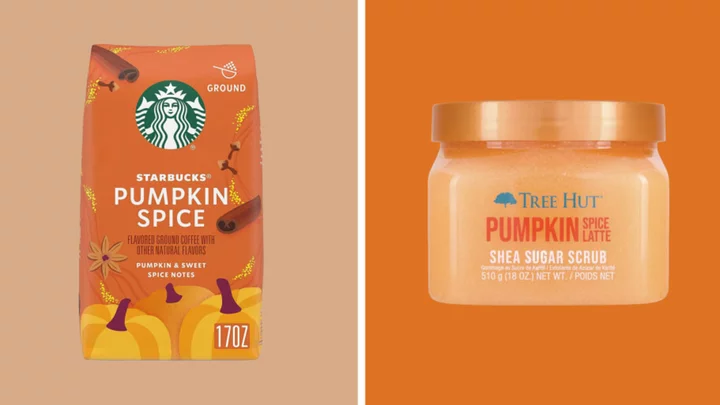
20 of the Best Pumpkin Spice Products to Satisfy Your Autumnal Obsession
From flavored coffee to candles that'll make your whole house smell like a freshly baked pie, these pumpkin spice products are perfect for fall.
2023-09-20 05:22

DoorDash, Grubhub, Uber Eats can sue NYC over commission caps
NEW YORK A federal judge on Tuesday said DoorDash, Grubhub and Uber Eats can sue New York City
2023-09-20 02:15
You Might Like...

Is bottomless prosecco going to be killed off by climate change?

Podcaster Absolutely Destroys Entire Concept of Cooking One's Own Meals

20 Fall Harvest Words and Their Origins
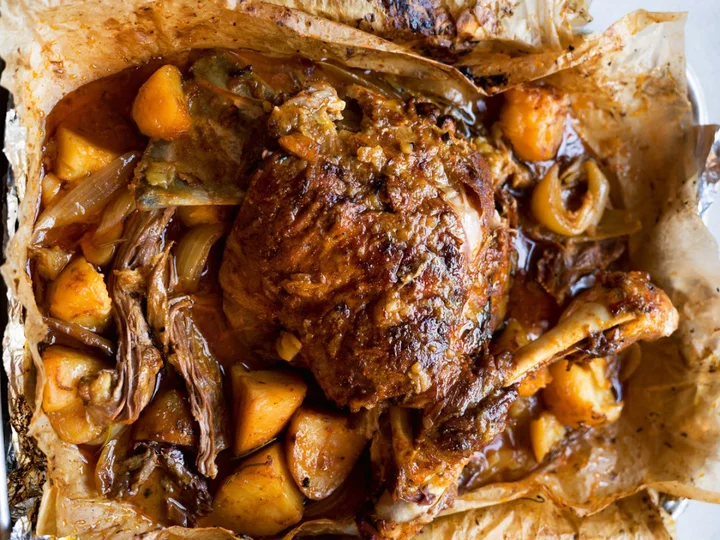
Make this Middle Eastern lamb shoulder for your next Sunday roast
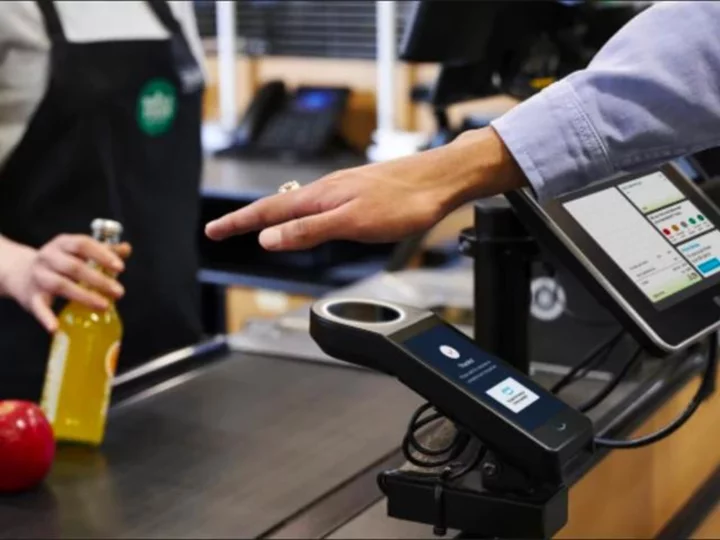
Amazon will let you pay with a wave of your hand at all Whole Foods stores
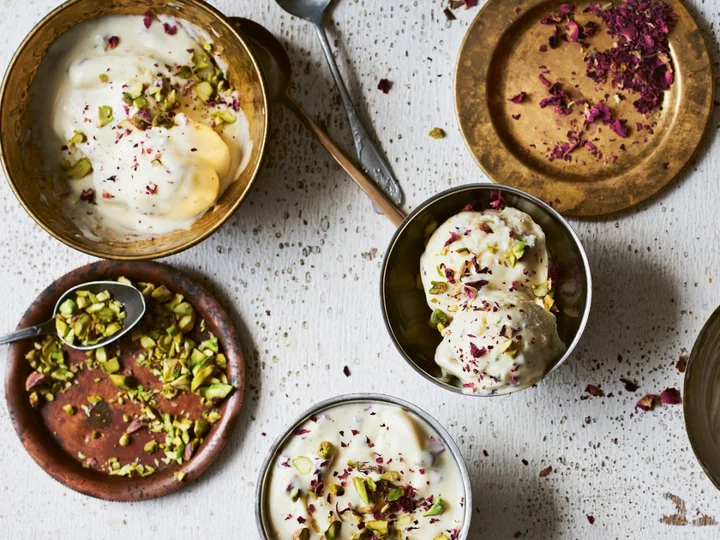
No ice cream maker? No problem. Try this no-churn recipe

The dish that defines me: Rosie Grant’s gravestone recipes
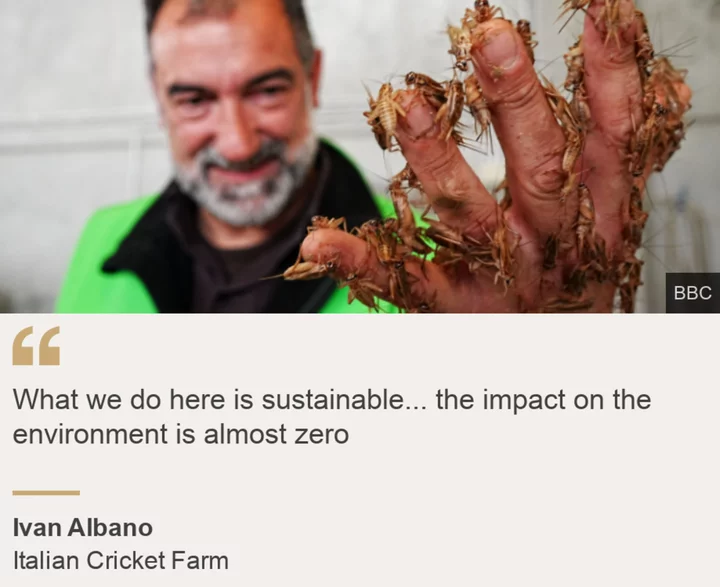
Insects find their way onto Italian plates despite resistance
